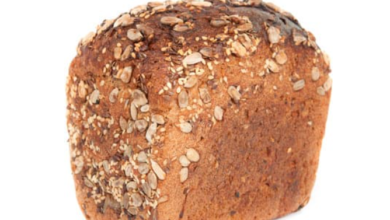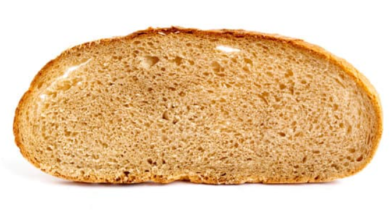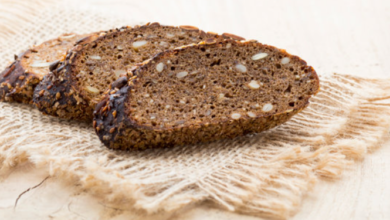What Temperature Should Rye Bread Be Done At?

What To Know
- This guide will delve into the science behind rye bread baking, explaining the importance of temperature and providing a comprehensive guide to ensure your bread reaches perfection.
- Rye bread is a type of bread made from rye flour, which is higher in fiber and nutrients than wheat flour.
- During baking, the internal temperature of rye bread plays a vital role in determining its texture, crust, and overall quality.
Baking rye bread is an art that requires precision and attention to detail. One crucial aspect of this process is determining the ideal internal temperature at which the bread is fully baked. This guide will delve into the science behind rye bread baking, explaining the importance of temperature and providing a comprehensive guide to ensure your bread reaches perfection.
Understanding Rye Bread Baking
Rye bread is a type of bread made from rye flour, which is higher in fiber and nutrients than wheat flour. The unique composition of rye flour gives rye bread its characteristic dense texture and slightly sour flavor.
The Significance of Temperature
During baking, the internal temperature of rye bread plays a vital role in determining its texture, crust, and overall quality. The ideal internal temperature for rye bread is between 200°F (93°C) and 210°F (99°C).
How to Measure the Internal Temperature
To accurately measure the internal temperature of rye bread, you can use a digital instant-read thermometer. Insert the thermometer probe into the center of the loaf, avoiding the crust.
Signs of Doneness
In addition to measuring the internal temperature, there are several other signs that indicate rye bread is done:
- Crust Color: The crust should be a deep golden brown and slightly crispy.
- Tapping Sound: When you tap the bottom of the loaf, it should sound hollow.
- Internal Texture: The bread should be firm to the touch but not dense or crumbly.
Tips for Achieving the Perfect Temperature
- Use a calibrated thermometer: Ensure your thermometer is accurate to get precise readings.
- Bake in a preheated oven: This helps create an even cooking environment.
- Rotate the loaf during baking: This prevents uneven browning and ensures consistent cooking.
- Consider the size of the loaf: Larger loaves may require slightly longer baking times.
- Check the temperature regularly: Monitor the internal temperature closely to avoid overbaking.
Troubleshooting Temperature Issues
- Underbaked Bread: If the internal temperature is below 200°F (93°C), the bread may be doughy and undercooked. Continue baking until the desired temperature is reached.
- Overbaked Bread: If the internal temperature exceeds 210°F (99°C), the bread may be dry and crumbly. Avoid overbaking to prevent this.
Takeaways: Mastering the Art of Rye Bread Baking
By understanding the ideal temperature and following the tips outlined in this guide, you can consistently bake perfect rye bread. Experiment with different baking times and temperatures to find what works best for your oven and recipe. With practice and patience, you will master the art of rye bread baking and create delicious, satisfying loaves that will impress your family and friends.
Frequently Asked Questions
Q: What is the best way to store rye bread?
A: Store rye bread in a cool, dry place, such as a breadbox or airtight container. This will help it stay fresh for several days.
Q: Can I freeze rye bread?
A: Yes, you can freeze rye bread for up to 3 months. Wrap it tightly in plastic wrap before freezing. Thaw at room temperature before serving.
Q: Why is my rye bread so dense?
A: Dense rye bread can be caused by overmixing the dough or using too much flour. Be sure to mix the dough gently and measure your flour accurately.


